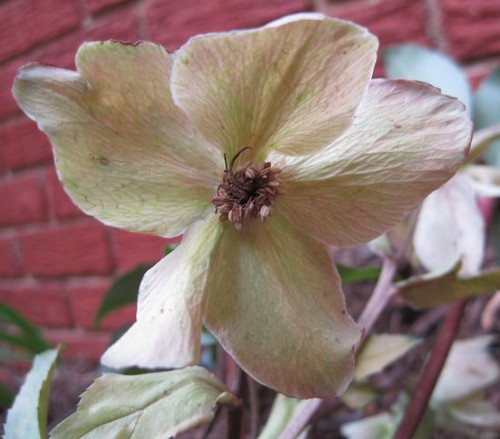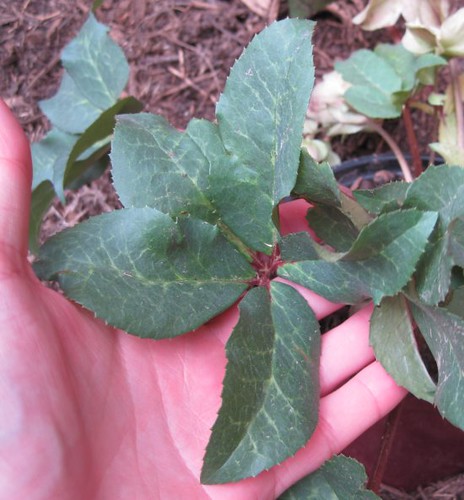On Saturday, April 24, we held the 2nd meeting of the MidAmerica chapter of the International Aroid Society at the Missouri Botanical Gardens in St. Louis. Being the primary organizer, I was very happy to see a large attendance for this event. The 35 attendants included plant enthusiasts who traveled from the distant states of Arizona, Florida, Pennsylvania, and Virginia - as well as nearby states of Arkansas, Texas, Oklahoma, and Illinois. There were even a couple of international visitors that were in St. Louis at the right time to attend the meeting - one from Germany and another from French Guiana.
Talks
The meeting included two presentations by Dr. Thomas Croat, a leading researcher in the Araceae family; a talk by Steve Lucas, a hobbyist who has a wonderful rainforest in his backyard in Arkansas; a talk by Steve Marak, who spoke about growing hardy Aroids in the temperate part of the central United States; and a talk by Joep Moonen, who showed slides of his Philodendron pictures from Brazil, including the collection of Roberto Burle Marx.
Dr. Croat's first talk was "Review of Monographic and Revisionary Studies with Neotropical Araceae." In other words, he talked about the current research of Aroids in the the western hemisphere, specifically tropical Central and South America. He gave a nice outline of the number of species and genera present in each South American country. Ecuador and Colombia are especially diverse, but Colombia no longer allows exploration, so many unknown species are disappearing there without ever being cataloged or appreciated.
Dr. Croat's second talk (after lunch) was titled "An introduction to aroid genera" and covered every genus of Aroid and their relative size (number of species) and distributions (where they occur in nature).
Steve Lucas talked about the creation of his tropical atrium and showed some really nice pictures of the growth of his plants through the years. Since I have seen his atrium in person, it was really neat to see the atrium when first planted. It looked rather barren in comparison to the full mature look that it has now.
Steve Marak gave a great presentation (often humorous) about his successes and failures with growing hardy Aroids outdoors in a temperate climate. He showed pictures of many of his plants: Arisaema, Amorphophallus, Typhonium and others. He has a certain fondness for the "unusual and fragrant" or, as others say, "bizarre and smelly." This was the first time I've met Steve Marak and I enjoyed getting to know him and his plant interests. Less than a week later we found ourselves both at the orchid show in Oklahoma City.
Joep Moonen's presentation titled “A preview of the Philodendron from some arid areas of Brazil and a visit to the Burle Marx Collection in Brazil” was a collection of pictures from his home country of French Guiana, where he leads ecotours, as well as pictures from around Brazil. Among his Brazil pictures were those of the Roberto Burle-Marx sitio. Burle-Marx was a wonderful Brazilian artist who had a great fondness of tropical plants. He had a huge garden around his house where he mixed his art with his many collected plants. After his death, he left the gardens to the country of Brazil and Joep visited the gardens and allowed us to follow along through his pictures.
Tours
After the talks and lunch, we headed over to the Missouri Botanical Gardens main grounds for some tours. We got to go into the Aroid greenhouse (which is not publicly accessible), the Climatron (which was currently closed in preparation for a new exhibit), and finally the Herbarium (which is also not open to the public). These behind-the-scenes tours were led by Dr. Croat and his staff. It was a great opportunity for interested Aroid growers to ask questions about the conditions in which these plants grow in their native habitats and to discuss correct names of plants and the focus of current research.
The Climatron is a lot like Oklahoma City's Myriad Garden tropical conservatory, with collections of Gingers, Bromeliads, Aroids, Begonias and Marantaceas (my favorite).
Hopefully you can attend one of the future meetings and see things in person!
Many of my pictures have been posted
here.
I'll be posting more details about this meeting over the next week or so.

























